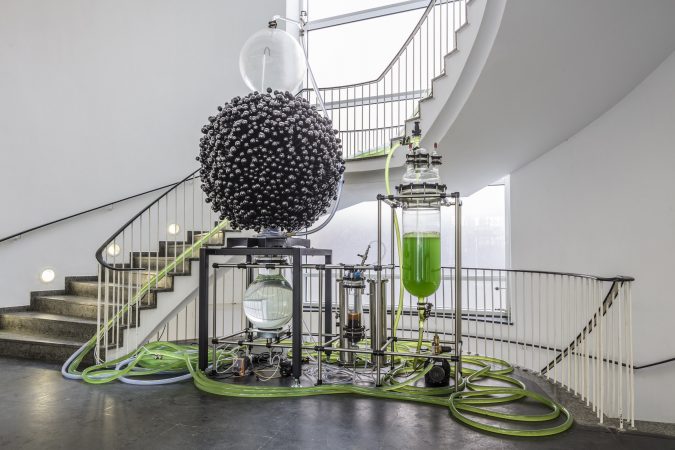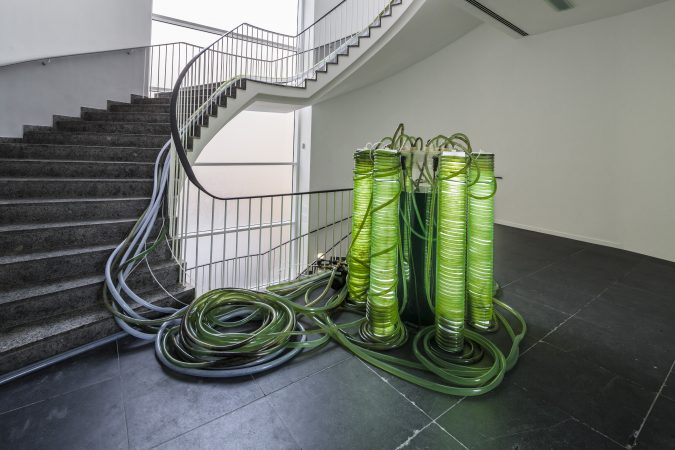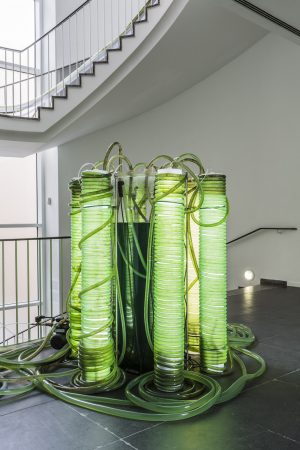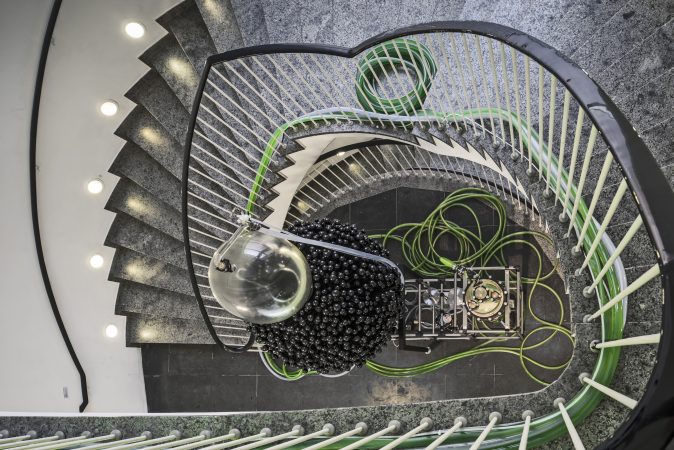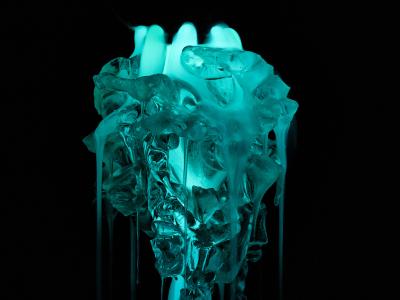Gate
In the sculpture GATE, specially cultivated algae are filtered in order to extract the amino acid tyrosine, which is necessary for the production of dopamine. The dopamine gained from the algae is used along with the psilocyn from the fungi to synthesize the molecular sculpture PSILAMIN. The substance exhibits psychoactive properties, which is why solid objects would seem to liquefy and appear viscous if PSILAMIN were to be ingested. Form and anti-form merge here both literally and allegorically in an artistic statement. The waste product of this chemical process is colorless slime. In order to create this substance known as P+, water is purified and desalinized when it passes through the GATE.
Materials, both with their specific properties and in terms of their cultural attributions, play a central role in Feuerstein’s work.
MANNA-MACHINE III involves a bioreactor in which the single-cell green algae chlorella vulgaris is cultivated. Feuerstein brings the algae as a material with cultural and historical connotations into the context of art. It is widely considered to be an important model organism and played a key role in unlocking the process of photosynthesis among other things. Thus the algae’s use in MANNA MACHINE III refers to different chapters in the history of science.

